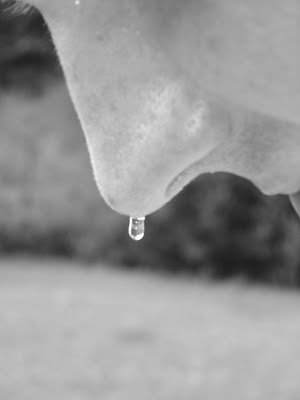
We left Hooper Bay this morning, flying out in the same small plane that had just delivered a fresh load of volunteers from the lower 48. As we took off and gained elevation, we had an excellent view of the city, looking west towards the Sea.
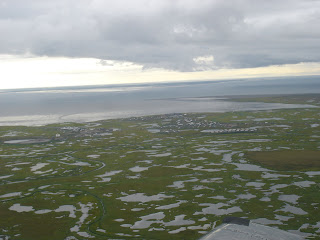
Would I go back? In a heartbeat. For all the undesirable elements of Hooper Bay, there were positive, redeeming qualities. Moments of beauty of joy and promise. The town and the people of Hooper Bay have their faults, just like we all do--it's just that their situation is different than the world I live in in Jacksonville, Florida.
Some people have asked...why spend the time and money in such an isolated place as Hooper Bay? Can't they just move somewhere else? The answer to that question is easy---this is their home. It's where they live, and where their ancestors and families have lived for a long time. We all have places that we call home, and these places don't always make sense to others. I would hate to live in Fresno or Ohio or Arizona, but there are millions of people who live there and would never want to leave. More power to them.
 Samaritan's
Samaritan's Purse draws its name from the Parable of the Good Samaritan, found in
Luke 10:30-37. I like this story for a number of reasons, but here is a little nugget of truth that really struck home in regards to Hooper Bay. The Samaritan didn't ask the man what his religious or political affiliation was; he didn't ask him about any annoying habits or addictions or if they were of the same ethnicity or nationality. The Samaritan saw a need, had the ability to address that need, and took action.
The town of Hooper Bay needs help, and we were fortunate enough to be in a position to lend a hand. I know that lesson can be applied elsewhere as well.

















 David, from my home church in Jacksonville.
David, from my home church in Jacksonville.

 Jay was the other half. Did I mention I gained EIGHT pounds while I was there?
Jay was the other half. Did I mention I gained EIGHT pounds while I was there?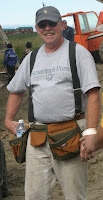 Roy and Art came from Minnesota. Art (below) posing with his prize halibut.
Roy and Art came from Minnesota. Art (below) posing with his prize halibut.
 Yours truly, on the shores of the Bering Sea.
Yours truly, on the shores of the Bering Sea.

 That's all for the bad news...in spite of what might seem to be overwhelming odds and a miserable existence, many of the people of Hooper Bay find joy in the small things. And thanks to the work of the state of Alaska and organizations like Samaritan's Purse, the future is looking much brighter. In this image, local kids play around the base of what will be three large wind turbines, bringing reliable, cheap electricity electricity to this isolated town.
That's all for the bad news...in spite of what might seem to be overwhelming odds and a miserable existence, many of the people of Hooper Bay find joy in the small things. And thanks to the work of the state of Alaska and organizations like Samaritan's Purse, the future is looking much brighter. In this image, local kids play around the base of what will be three large wind turbines, bringing reliable, cheap electricity electricity to this isolated town.
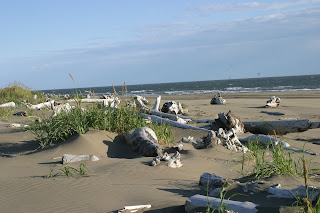
 Full disclosure:
Full disclosure: 






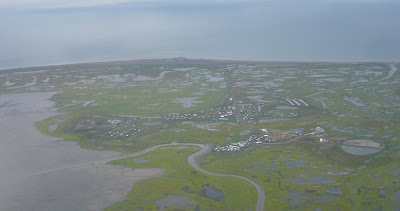 In 2005, the school caught fire and burned; the resulting fire also burned 17 homes in the community (when you consider that there are only 40-50 homes in the entire town, that's a lot!). Franklin Graham (yes--he's Billy Graham's son and also the CEO of SP) was in Alaska at the time, and immediately flew to Hooper Bay to evaluate the scene. What he saw then, and what we saw these past two weeks, is hard to believe.
In 2005, the school caught fire and burned; the resulting fire also burned 17 homes in the community (when you consider that there are only 40-50 homes in the entire town, that's a lot!). Franklin Graham (yes--he's Billy Graham's son and also the CEO of SP) was in Alaska at the time, and immediately flew to Hooper Bay to evaluate the scene. What he saw then, and what we saw these past two weeks, is hard to believe.  Most of the town of Hooper Bay lives in Third World conditions; no running water or sewer systems in their homes, and although most have electricity, some do not. They have oil furnaces to heat their homes, but since the price of oil is $6.00+/gallon, many heat with driftwood collected on the beach. There are dirt roads in town, but only 2 or 3 vehicles. However, the villagers have a huge collection of four-wheelers that they use for transportation. Most of the homes look derelict and abandoned; you are shocked to find out that an entire extended family lives here. For many months of the year, the town is covered in snow and ice, with 18 hours of darkness each day. Abuse, in all of it's various forms, is very prevelant in town, and depression and suicide are major issues, especially among the teens in town.
Most of the town of Hooper Bay lives in Third World conditions; no running water or sewer systems in their homes, and although most have electricity, some do not. They have oil furnaces to heat their homes, but since the price of oil is $6.00+/gallon, many heat with driftwood collected on the beach. There are dirt roads in town, but only 2 or 3 vehicles. However, the villagers have a huge collection of four-wheelers that they use for transportation. Most of the homes look derelict and abandoned; you are shocked to find out that an entire extended family lives here. For many months of the year, the town is covered in snow and ice, with 18 hours of darkness each day. Abuse, in all of it's various forms, is very prevelant in town, and depression and suicide are major issues, especially among the teens in town.


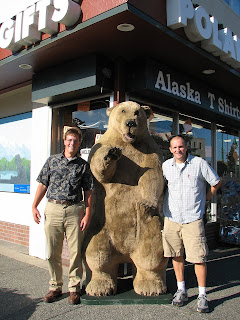

 Balto, of course, was the lead dog on the dog sled team that took diphtheria serum from Anchorage to Nome in 1927 to stop a fatal outbreak of the disease. Each year, this run is relived as the Iditarod Trail Sled Dog Ride. (On a side note, if you want to read a spectacular book about the event, I highly recommend The Cruelest Miles, by Gay & Laney Salisbury). You can read more about this historic event
Balto, of course, was the lead dog on the dog sled team that took diphtheria serum from Anchorage to Nome in 1927 to stop a fatal outbreak of the disease. Each year, this run is relived as the Iditarod Trail Sled Dog Ride. (On a side note, if you want to read a spectacular book about the event, I highly recommend The Cruelest Miles, by Gay & Laney Salisbury). You can read more about this historic event 

